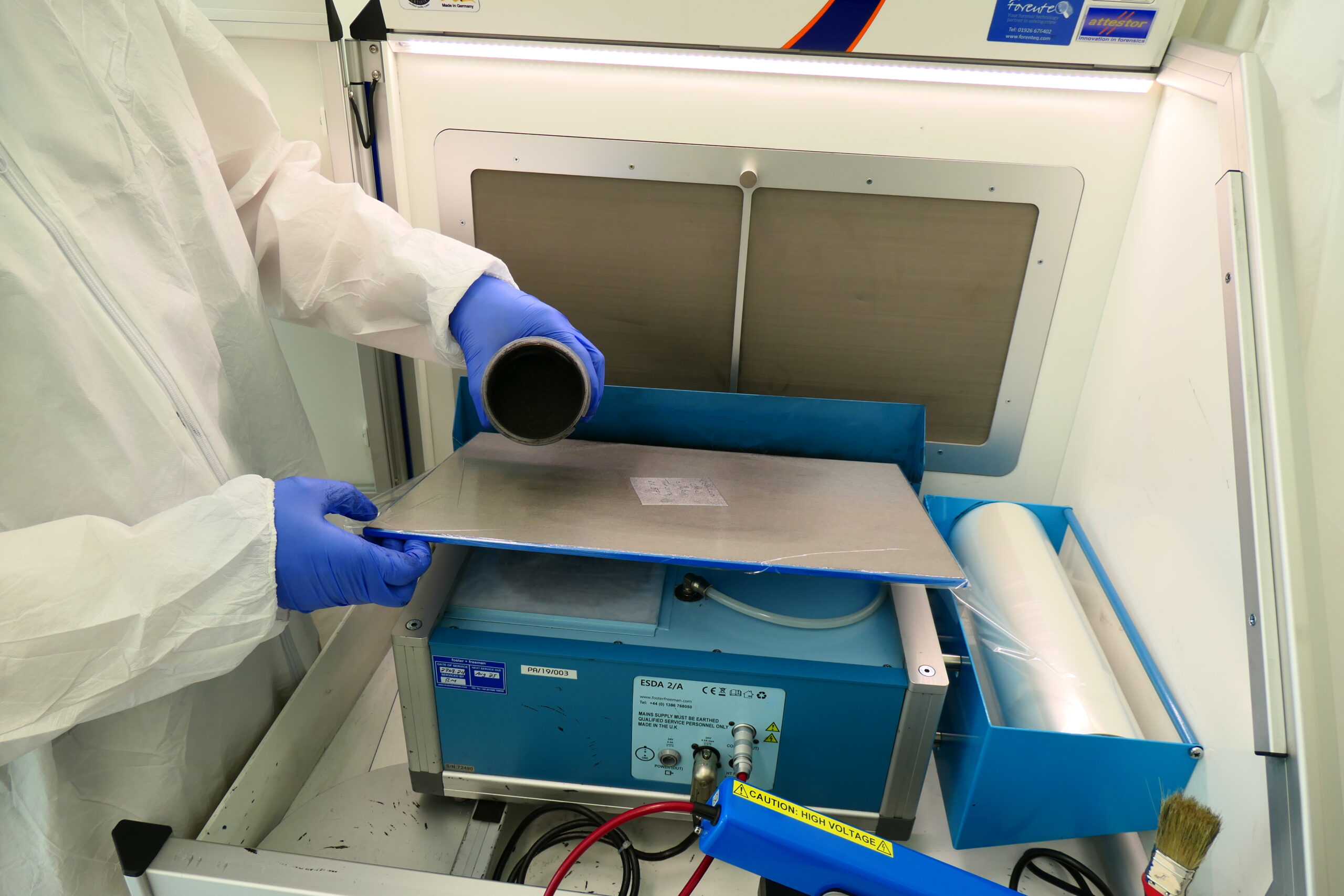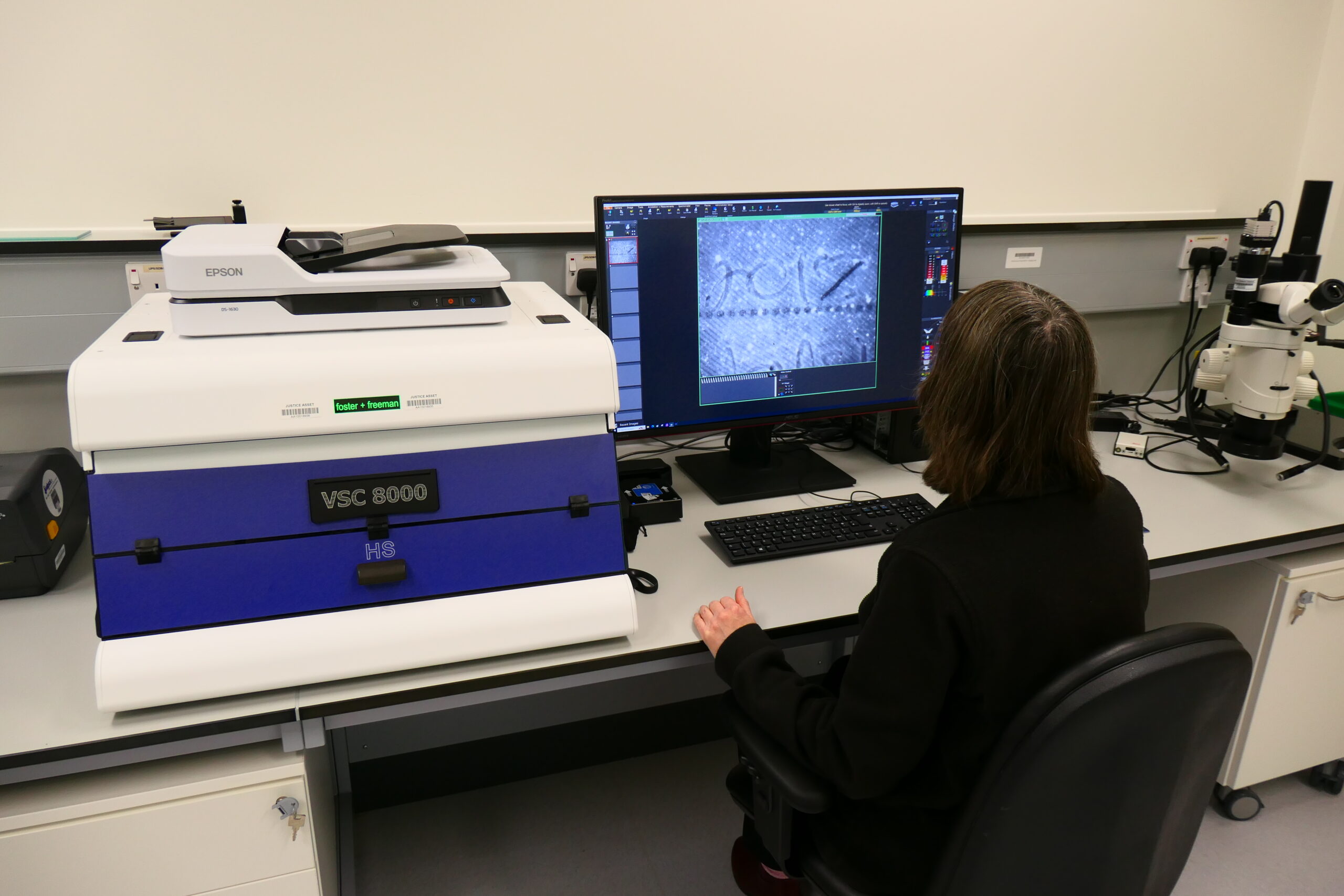Fig.1
Documents Analysis


Fig.2
Documents and Handwriting
Forensic examination of questioned documents involves the analysis of any documents that are suspected to be forged, altered, or in dispute. This discipline, often referred to as questioned document examination, covers a wide range of scenarios: counterfeit passports or currency, altered records, anonymous threatening letters, questioned signatures on wills or contracts, and so on. Documents can yield a wealth of information.
For example, an investigator might question whether a suicide note was genuinely written by the deceased or fabricated by someone else , or whether an anonymous threatening note has indented impressions that reveal what was written on a sheet above it (perhaps an address or phone number). Document examiners apply their skills in criminal cases e.g. fraud, identity theft, ransom notes.
There are several facets to document and handwriting analysis:
- Document Authenticity: Security Documents – such as passports, driving licences, currency etc. contain special features to protect them. This might include things like special printing techniques, the use of UV and IR features, watermarks and so on. Some features are visible to the naked eye, but others require specialised equipment, together with a knowledge of what is expected in various documents.
- Detection of Alterations: Examiners inspect documents for any signs of tampering. This includes erasures (where someone might have rubbed out text or numbers – visible under magnification or oblique lighting also includes page removal), obliterations (text covered with ink or correction fluid), or additions (extra strokes or words inserted).
- Materials Analysis: The paper, ink, and other materials can be analysed to glean information. For instance, inks can be examined using infrared or ultraviolet light; different inks may react differently (one might fluoresce under UV while another doesn’t), revealing where one pen was used to overwrite another.
- Handwriting Comparison: One of the core tasks is comparing a questioned handwriting sample (letters, numbers, and signature) to known samples from an individual. Handwriting is considered individualistic – habits in letter formation, stroke order, spacing, slant, and pressure can be distinctive to a writer.
- Indented Writing: Sometimes, when someone writes on a notepad, the pressure of the pen leaves indentations on the pages underneath. Document examiners use techniques (like oblique lighting or an electrostatic detection apparatus known as Electrostatic Detection Device (EDD) to visualize these indentations on a blank page below.
Document examination is a varied field. Skills required range from a knowledge and understanding of printing processes and different inks to a knowledge and understanding of how people develop writing skills and how they may try and alter their natural writing/signature.
